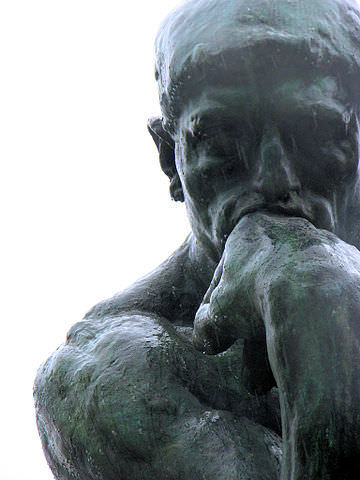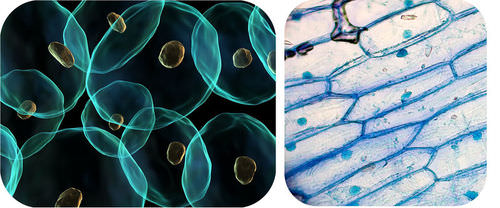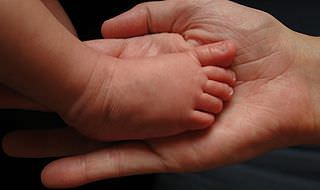2.2 所有生活事物的共同遭遇
章节大纲
-
The Thinker
::思想家You've probably seen this famous statue created by the French sculptor Auguste Rodin. Rodin's skill as a sculptor is especially evident here because the statue — which is made of bronze — looks so lifelike. How does a bronze statue differ from a living, human being or other living organism ? What is life? What does it mean to be alive? Science has answers to these questions.
::你可能见过法国雕塑家奥古斯丁·罗丹所创造的著名雕像。罗丹作为雕塑家的技巧在这里特别明显,因为由铜制成的雕像看起来很像生命。青铜雕像与活人、人类或其他生物体有什么不同?生命是什么?生存意味着什么?科学对这些问题有答案。Characteristics of Living Things
::生活特征To be classified as a living thing, most scientists agree that an object must have all seven of the traits listed below. Humans share these characteristics with other living things.
::多数科学家同意,物体必须具备以下所有七个特性。人类与其他生物具有这些特性。-
organization
::组织组织 -
metabolism
::新陈代谢 -
growth
::增长增长 -
adaptation
::适应适应适应适应适应适应适应适应适应适应适应适应适应适应适应适应适应适应适应适应适应适应适应适应适应适应适应适应适应适应适应适应适应适应适应适应适应适应适应适应适应适应适应适应适应适应适应适应适应适应适应适应适应适应适应适应适应适应适应适应适应适应适应适应适应适应适应适应适应适应适应适应适应适应适应适应适应适应适应适应适应适应适应适应适应适应适应适应适应适应适应适应适应适应适应适应适应适应适应适应适应适应适应适应适应适应适应适应适应适应适应适应适应适应适应适应适应适应适应适应适应适应适应适应适应适应适应适应适应适应适应适应适应适应适应适应适应适应适应适应适应适应适应适应适应适应适应适应适应适应适应适应适应适应适应适应适应适应适应适应适应适应适应适应适应适应适应适应适应适应适应适应适应适应适应适应适应适应适应适应适应适应适应适应适应适应适应适应适应适应适应适应适应适应适应适应适应适应适应适应适应适应适应适应适应适应适应适应适应适应适应适应适应适应适应适应适应适应适应适应适应适应适应适应适应适应适应适应适应适应适应适应适应适应适应适应适应适应适应适应适应适应适应适应适应适应适应适应适应适应适应适应适应适应适应适应适应适应适应适应适应适应适应适应适应适应适应适应适应适应适应适应适应适应适应适应适应适应适应适应适应适应适应适应适应适应适应适应适应适应适应适应适应适应适应适应适应适应适应适应适应适应适应适应适应适应 -
response to
stimuli
::对刺激反应的反应
Homeostasis
::常态All living things are able to maintain a more-or-less constant internal environment. Regardless of the conditions around them, they can keep things relatively stable on the inside. The condition in which a system is maintained in a more-or-less steady state is called homeostasis. Human beings, for example, maintain a stable internal body temperature. If you go outside when the air temperature is below freezing, your body doesn't freeze. Instead, by shivering and other means, it maintains a stable internal temperature.
::所有生物都能够维持一个或多或少的不变内部环境。 不管周围环境的条件如何, 它们都可以保持内部相对稳定。 一个系统维持在一个或多或少稳定状态的状态, 其条件被称为“ 软体保持状态 ” 。 例如, 人类保持一个稳定的内体温度。 如果你在空气温度低于冰冷时走出去, 你的身体不会冻僵。 相反, 通过发抖和其他手段, 它保持一个稳定的内部温度 。Homeostatic regulation of body temperature
::体温自体调节Organization
::组织组织组织组织组织组织组织Living things have multiple levels of organization. Their molecules are organized into one or more . A cell is the basic unit of the structure and function of living things. Cells are the building blocks of living organisms. An average adult human being, for example, consists of trillions of cells. Living things may appear very different from one another on the outside, but their cells are very similar . Compare the human cells and onion cells in the figure . What similarities do you see?
::活物有多种层次的组织。它们的分子组织成一个或多个。细胞是活物结构和功能的基本单位。细胞是活生物体的构件。细胞是活生物体的构件。例如,普通成年人由数万亿个细胞组成。活物在外表上可能与众不同,但是它们的细胞非常相似。比较图中的人类细胞和洋葱细胞。你可以看到什么相似之处?A representation of human cells (left) and onion cells (right). If you looked at human and onion cells under a microscope, this is what you might see.
::人类细胞( 左) 和洋葱细胞( 右) 的表示。 如果您在显微镜下查看人细胞和洋葱细胞, 这是您可能看到的 。Metabolism
::新陈代谢All living things can use energy . They require energy to maintain internal conditions (homeostasis), to grow, and to execute other processes. Living cells use the "machinery" of metabolism, which is the building up and breaking down of chemical compounds. Living things can transform energy by building up large molecules from smaller ones. This form of metabolism is called anabolism . Living things can also break down, or decompose, large organic molecules into smaller ones. This form of metabolism is called catabolism .
::所有生物都可以使用能源。 它们需要能量来维持内部条件( homeostasis ) , 生长, 并进行其他过程。 活细胞使用新陈代谢的“ 机器 ” , 即化学化合物的积累和分解。 活生物可以通过从较小分子中建立大型分子来改变能量。 这种新陈代谢形式被称为无代谢。 活生物也可以分裂或分解大型有机分子, 变成小分子。 这种新陈代谢形式被称为催化。Consider weight lifters who eat high- diets. A protein is a large molecule made up of several small amino acids . When we eat proteins, our breaks them down into amino acids (catabolism), so that they are small enough to be absorbed by the digestive system and into the . From there, amino acids are transported to , where they are converted back to proteins (anabolism).
::蛋白质是由几个小型氨基酸组成的大型分子。当我们食用蛋白质时,我们将其分解为氨基酸(催化脱氧酸 ) , 这样它们就小到可以被消化系统吸收并进入。 从那里,氨基酸被迁移到那里,然后被转化回蛋白质(消化系统 ) 。Growth
::增长 增长 增长 增长 增长All living things have the capacity for growth. Growth is an increase in size that occurs when there is a higher rate of anabolism than catabolism . A human infant , for example, has changed dramatically in size by the time it reaches , as is apparent from the image . In what other ways do we change as we grow from to adulthood?
::所有生物都有增长的能力。 增长是当代谢率比代谢率高时出现的规模增长。 比如,人类婴儿在到达时,其规模已经发生了巨大变化,从图像中可以看出这一点。 当我们从成长到成年时,我们以什么其他方式改变呢?A human infant has a lot of growing to do before adulthood.
::人类的婴儿在成年前有很多事情要做。Adaptations and Evolution
::适应和演变An adaptation is a characteristic that helps living things survive and reproduce in a given environment. It comes about because living things have the ability to change over time in response to the environment. A change in the characteristics of living things over time is called evolution. It develops in a of organisms through random genetic and .
::适应性是一种有助于生物在特定环境中生存和繁殖的特征。它之所以出现,是因为生物能够随时间变化,以应对环境。随着时间的变化,生物特征的变化被称为进化。它通过随机基因和(......)在生物体中发展。Response to Stimuli
::应对刺激措施All living things detect changes in their environment and respond to them. A response can take many forms, from the movement of a unicellular organism in response to external chemicals (called chemotaxis) to complex reactions involving all the of a . A response is often expressed by motion; for example, the leaves of a plant turning toward the sun (called phototropism).
::所有生物都检测到环境的变化并作出反应。 反应可以采取多种形式,从对外部化学品(所谓的化疗)作出反应的单心机体运动到涉及所有事物的复杂反应。 反应往往通过运动来表达;例如,植物的叶子转向太阳(所谓的光原主义 ) 。These sprouts are turning toward the sun.
::这些芽体正朝太阳转过来Reproduction
::复制复制All living things are capable of reproduction , the process by which living things give rise to offspring. Reproduction may be as simple as a single cell dividing to form two daughter cells , which is how reproduce. Reproduction in human beings and many other organisms, of course, is much more complicated. Nonetheless, whether a living thing is a human being or a bacterium, it is normally capable of reproduction.
::所有生物都能够繁殖,即生物产生后代的过程。生殖可能像单细胞一样简单,分裂成两个女儿细胞,也就是如何繁殖。人类和许多其他生物的繁殖当然要复杂得多。 然而,无论生物是人类还是细菌,它通常都能繁殖。Feature: Myth vs. Reality
::特征:神话对现实Myth: are living things.
::传说:是活物。Reality: The traditional scientific view of viruses is that they originate from bits of or shed from the cells of living things, but that they are not living things themselves . S cientists have long argued that viruses are not living things because they do not exhibit most of the defining traits of living organisms. A single virus, called a virion , consists of a set of genes (DNA or RNA) inside a protective protein coat, called a capsid . Viruses have organization, but they are not cells, and they do not possess the cellular "machinery" that living things use to carry out life processes. As a result, viruses cannot undertake metabolism, maintain homeostasis, or grow. They do not seem to respond to their environment, and they can reproduce only by invading and using "tools" inside host cells to produce more virions. The only traits viruses seem to share with living things is the ability to evolve adaptations to their environment. In fact, some viruses evolve so quickly that it is difficult to design drugs and vaccines against them! That's why maintaining protection from the viral disease influenza , for example, requires a new flu vaccine each year.
::病毒的传统科学观点:病毒的传统科学观点是,病毒起源于生物细胞,或从细胞中消失,但并不是活物本身。 科学家们长期以来一直认为病毒不是活物,因为它们没有表现出活生物体的大部分特征。 一种叫做病毒的单一病毒,叫做病毒,由保护性蛋白外衣中的一组基因(DNA或RNA)组成,称为病毒。病毒有组织,但不是细胞,它们并不拥有生命细胞的细胞“机器 ” 。因此,病毒不能进行新陈代谢、保持自闭或生长。它们似乎不能对环境作出反应,只能通过侵入和使用宿主细胞内的“工具”来繁殖更多的病毒。病毒似乎与生命事物分享的唯一特征是发展适应环境的能力。事实上,有些病毒发展得如此迅速,因此很难设计出抗病毒药物和疫苗来对抗它们!这就是为什么保持对病毒性流感的防护,例如每年需要一种新的流感疫苗。Within the last decade, new discoveries in virology (the study of viruses) suggest that this traditional view about viruses may be incorrect, and that the "myth" that viruses are living things may be the reality. Researchers have discovered giant viruses that contain more genes than cellular life forms, such as bacteria. Some of the genes code for proteins needed to build new viruses, which suggests that these giant viruses may be able — or were once able — to reproduce without a host cell. Some of the strongest evidence that viruses are living things comes from studies of their proteins, which show that viruses and cellular life share a common ancestor in the distant past. Viruses may have once existed as primitive cells, but at some point they lost their cellular nature and became modern viruses that require host cells to reproduce. This idea is not so far-fetched when you consider that many other require a host to complete their .
::在过去十年里,病毒学的新发现(病毒研究)表明,病毒的这种传统观点可能不正确,病毒是活物的“神话”可能是现实。研究人员发现了比细胞生命形式(如细菌)更含有基因的巨型病毒。一些蛋白质基因代码需要用来制造新病毒,这表明这些巨型病毒可能能够——或曾经能够——在没有宿主细胞的情况下繁殖。一些最有力的证据表明,病毒是活物,来自对其蛋白质的研究,这些研究表明病毒和细胞生命在遥远的过去有着共同的祖先。病毒可能曾经作为原始细胞存在,但在某些时候,它们失去了细胞性质,成为现代病毒,需要宿主细胞繁殖。当你认为许多其他病毒需要宿主来完成它们的宿主时,这种想法并不牵强。Summary
::摘要-
To be classified as a living thing, most scientists agree that an object must exhibit seven characteristics.
Humans share these traits with all other living things.
::大部分科学家都同意,物体必须具有七个特征。 人类与其他生物一样具有这些特征。 -
All living things:
-
can maintain a more-or-less constant internal environment, which is called homeostasis
::能够维持一个或多或少的 恒定的内部环境, 即所谓的共振 -
have multiple levels of organization and consist of one or more cells
::有多个层次的组织,由一个或多个单元格组成 -
can use energy and are capable of metabolism
::能够使用能源并能够进行新陈代谢 -
grow and develop
::发展和发展 -
can evolve adaptations to their environment
::能够发展适应其环境的适应 -
can detect and respond to environmental stimuli
::能够检测和应对环境刺激 -
are capable of reproduction, which is the process by which living things give rise to offspring
::生殖能力,也就是生物物质产生后代的过程。
::所有生物:能够维持一个或多或少的恒定的内部环境,即所谓 " 全息保持 " 的内在环境有多种层次的组织,由一个或多个细胞组成,能够使用能源,能够新陈代谢生长和发展,能够演变适应其环境的适应,能够探测和应对环境刺激力能够再繁殖,这是生物物质产生后代的过程。 -
can maintain a more-or-less constant internal environment, which is called homeostasis
Review
::回顾1. Identify the seven traits that most scientists agree are shared by all living things.
::1. 查明大多数科学家同意所有生物共有的七个特征。2. What is homeostasis? What is one way humans fulfill this criterion of living things?
::2. 什么是自闭症?什么是人类满足这一生活标准的一种方式?3. Define reproduction, and describe an example.
::3. 界定复制,并举一个例子。4. Assume that you found an object that looks like a dead twig. You wonder if it might be a stick insect. How could you determine if it is a living thing?
::4. 假设你发现了一个看起来像死树枝的物体,你不知道它是否是只树枝昆虫,你如何确定它是否是活物?5. Describe viruses and which traits they do and do not share with living things. Do you think viruses should be considered living things? Why or why not?
::5. 描述病毒和病毒的特性,它们与生物有哪些不同,哪些特性与生物没有共同之处。你认为病毒应被视为生物吗?为什么或为什么不?6. People who are biologically unable to reproduce are certainly still considered alive. Discuss why this situation does not invalidate the criteria that living things must be capable of reproduction.
::6. 生理上无法繁殖的人当然仍然被认为是活生生的,讨论为什么这种情况不能使生命必须能够繁殖的标准无效。7. What are the two types of metabolism described here. What are their differences?
::7. 这里所描述的两种新陈代谢类型是什么?它们有什么不同?8. What are some similarities between the cells of different organisms? If you are not familiar with the specifics of cells, simply describe the similarities you see in the pictures above.
::8. 不同生物的细胞之间有什么相似之处?如果您不熟悉细胞的具体特性,请简单描述您在以上图片中看到的相似之处。9. What are two processes in a living thing that use energy?
::9. 在使用能源的活物中,两个过程是什么?10. Give an example of a response to stimuli in humans.
::10. 举一个例子说明对人类刺激的反应。11. Do unicellular organisms (such as bacteria) have an internal environment that they maintain through homeostasis? Why or why not?
::11. 非心血管生物(如细菌)是否有它们通过自闭症维持的内部环境?为什么或为什么没有?12. Evolution occurs through natural ____________ .
::12. 演化通过自然 发生。13. If alien life is found on other planets, do you think the aliens will have cells? Discuss your answer.
::13. 如果在其他行星上发现外星生物,你认为外星人会有细胞吗?讨论你的答案。14. Movement in response to an external chemical is called ___________, while movement towards light is called ___________ .
::14. 针对一种外部化学品而移动称为...,而向光线移动则称为...。Explore More
::探索更多Watch the video below to learn about the discovery of ancient giant viruses in Siberia.
::看下面的录像 了解西伯利亚发现 远古巨型病毒的情况This video discusses the shared characteristics found in all living things.
::这段影片讨论所有生物中共有的特征。




